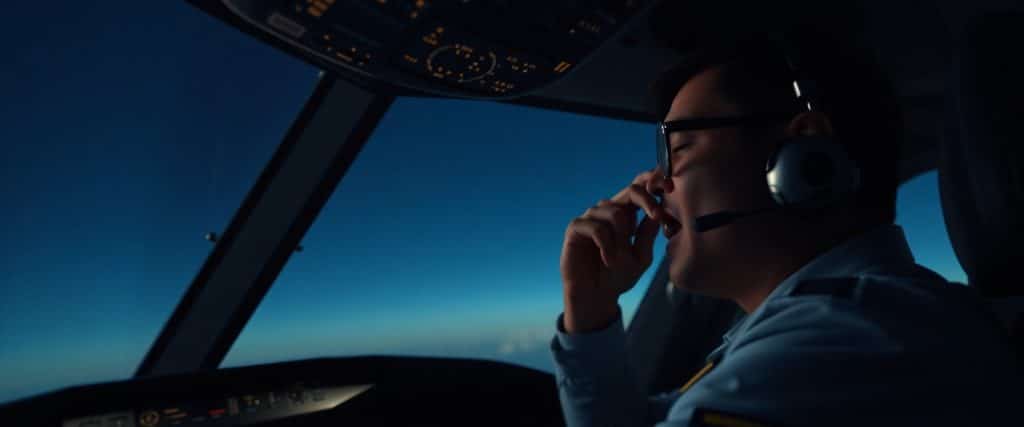Human Factors in Aviation
Dealing with Pilot Fatigue: Strategies for Improved Alertness
Alertness is your most valuable asset when operating an aircraft, yet pilot fatigue remains a persistent threat to flight safety. Managing fatigue effectively requires a combination of scientifically proven techniques, adherence to regulatory guidelines, and practical habits you can implement both on and off duty. In this guide, you’ll discover actionable strategies to enhance your mental and physical alertness, reduce risk during complex schedules or long-haul flights, and improve overall performance. Understanding pilot fatigue management empowers you to stay sharp and maintain safety, no matter the demands of your flight roster.
Top 5 Strategies to Prevent Pilot Fatigue
- Pre-flight Sleep Planning: Align rest with your duty schedule.
- Hydration: Drink water before and during the flight.
- Light Exposure: Use light strategically to manage circadian rhythm.
- Controlled In-flight Rest: Take brief, approved rest periods if allowed.
- Caffeine Timing: Use caffeine early in the duty period, not near the end.
The Science of Fatigue: Unpacking Cognitive Impacts
Fatigue directly impairs your brain’s ability to process information, slowing reaction times, clouding judgment, and weakening memory recall—all vital during flight operations. Studies reveal that after 17-19 hours without sleep, your cognitive performance can decline to levels comparable to a blood alcohol concentration of 0.05%. This cognitive degradation makes handling unexpected events or complex navigation more challenging, increasing the likelihood of errors. Understanding these neurological effects helps you appreciate why managing rest periods and in-flight alertness techniques are non-negotiable components of pilot fatigue management.
Neurological Reactions to Sleep Deprivation
Extended wakefulness disrupts the prefrontal cortex, compromising your decision-making, problem-solving, and attention span. Functional MRI scans show diminished activity in brain regions responsible for executive function, meaning your ability to multitask or respond swiftly under pressure decreases significantly. This neurological slowdown can cause microsleeps or momentary lapses in attention, often unnoticed until critical. Recognizing these subtle shifts in brain activity highlights why adhering to regulated rest and employing strategic caffeine use or brief naps are imperative countermeasures in aviation.
Performance Metrics: How Fatigue Diminishes Piloting Skills
Fatigue reduces your situational awareness, hand-eye coordination, and communication effectiveness—key piloting skills that directly impact flight safety. Simulator studies demonstrate a 20-50% increase in errors during fatigued states, from incorrect altitude settings to missed radio calls. This degradation becomes especially dangerous during takeoffs, landings, or emergency maneuvers where precision is non-negotiable. Monitoring flight performance data and self-assessing alertness can help you identify when fatigue compromises your operational capabilities.

Regulatory Landscape: Flight Time Limitations and Their Implications
Flight time limitations set by aviation authorities define maximum duty and flight hours to contain pilot fatigue, with rules varying by region. These regulations ensure pilots receive adequate rest between shifts, capping daily flight time typically between 8 to 14 hours and mandating minimum rest periods, often 10 hours or more. Exceeding these limits risks degraded performance, increasing fatigue-related incidents. Understanding how these restrictions shape your scheduling and rest opportunities directly impacts your ability to maintain alertness and safety during operations.
International Standards: ICAO and FAA Guidelines
The ICAO recommends flight and duty time limits designed to minimize fatigue across member states, typically limiting flight duty periods to 14 hours and mandating minimum rest of 10 hours. The FAA enforces stricter limits for U.S.-based airlines, restricting flight time to a maximum of 8 or 9 hours on single-pilot operations and requiring minimum rest of 10 consecutive hours before a new duty period. These international and national guidelines set a baseline you must navigate while managing fatigue within operational realities.
The Role of Airline Policies in Mitigating Fatigue
Beyond regulatory minimums, many airlines implement tailored fatigue risk management systems (FRMS) using data-driven approaches to adjust schedules, optimize rest breaks, and monitor pilot alertness. Airlines like Qantas and Delta integrate biomathematical fatigue models, allowing adjustments to duty periods based on circadian rhythms and operational demands. These policies give you tools and flexibility to manage fatigue more effectively while balancing safety and operational efficiency.
Airline-specific fatigue risk management systems (FRMS) represent an evolution beyond traditional flight time limitations by actively incorporating scientific data, pilot feedback, and operational variables. For example, FRMS may use predictive modeling to forecast periods of reduced alertness associated with time of day or cumulative duty hours. This allows airlines to dynamically rotate crews, schedule strategic naps, or enforce rest enhancements tailored to your routes and flight profiles. Evidence from carriers utilizing FRMS shows tangible reductions in fatigue-related incidents and improved pilot well-being, highlighting how company-level policies can empower you with more robust fatigue management tools than regulations alone.
Proactive Strategies: Optimizing Alertness Before, During, and After Flights
Maximizing alertness demands more than on-the-spot fixes; it requires strategic preparation spanning pre-flight rest, in-flight routines, and post-flight recovery. Scheduling naps during low workload phases and leveraging cockpit lighting to support circadian rhythms can improve vigilance. Adjusting sleep patterns before crossing time zones mitigates jet lag effects, while post-flight wind-down practices ensure quality restoration. Airlines implementing fatigue risk management systems (FRMS) provide frameworks that align duty times with circadian principles, offering pilots structured support beyond individual efforts.
Sleep Hygiene for Pilots: Crafting Restful Environments
Optimized sleep environments significantly boost recovery quality. Blackout curtains or sleep masks reduce ambient light that disrupts melatonin production. Noise-cancelling headphones or white noise machines help block cabin or hotel disturbances. Ambient temperatures ideally range between 60-67°F (15-19°C) to promote deep rest. Removing electronic devices or using blue light filters before bedtime aids in maintaining your natural circadian rhythm, setting the stage for effective, uninterrupted sleep needed to combat accumulated fatigue.
Nutrition and Hydration: Fuel for Sustained Focus
Your body depends on consistent fuel and hydration to sustain cockpit performance. Balanced meals rich in complex carbohydrates, lean proteins, and healthy fats provide steady energy rather than spikes followed by crashes. Dehydration of just 2% body weight can impair concentration and reaction time—common hazards during long-haul flights where dry cabin air accelerates fluid loss. Incorporating electrolyte-rich fluids and limiting caffeine after mid-flight support continuous alertness without contributing to sleep disturbances later.
In practice, pilots who prioritize nutrition and hydration experience fewer instances of mid-shift fatigue. Studies reveal that maintaining blood glucose levels through small, frequent meals stabilizes cognitive function. For example, snacking on nuts, fruits, or whole-grain crackers every 2-3 hours helps prevent energy dips that undermine vigilance. Additionally, tracking fluid intake with reminders counters the masking effect of adrenaline on thirst signals, ensuring hydration levels remain optimal despite circadian misalignment. Implementing these habits, combined with minimizing salt and sugar intake, supports your endurance under demanding flight conditions.
Real-World Insights: Pilots Share Their Best Practices
Many seasoned pilots emphasize personalized fatigue strategies that fit their unique schedules and bodies. Techniques range from strategic hydration and nutrition to tactical use of caffeine and light exposure. Veteran pilots often underline that understanding your own circadian rhythm and actively adjusting pre-flight routines can significantly reduce fatigue. Peer-shared tips highlight prioritizing quality sleep over quantity and experimenting with in-flight relaxation methods, helping you adapt during demanding multi-time-zone operations.
Techniques to Rejuvenate During Layovers
Layovers offer prime opportunities to reset alertness by engaging in controlled activities like light exercise, exposure to natural daylight, or brief mindfulness sessions. Many pilots recommend quick stretches or a 20-minute walk to boost circulation and cognitive function. Selecting accommodation with blackout curtains and soundproofing supports deeper restorative sleep, countering jet lag’s impact and enhancing your next flight’s performance.
Incorporating Power Naps and Active Breaks into Schedules
Integrating brief power naps of 15–30 minutes between flight segments can rejuvenate cognitive function without inducing sleep inertia. Complementing these naps with dynamic breaks, such as stretching or walking, helps maintain circulation and alertness, creating a balanced fatigue management routine that fits tight schedules.
Studies indicate that power naps improve reaction times by up to 34%, making them an effective tool during extended duty periods. Airlines that encourage short, scheduled naps have reported fewer fatigue-related incidents. Combining these naps with active breaks engages both physical and mental systems, reducing the risk of micro-sleeps and sustaining vigilance for longer durations. Implementing this method requires strict timing discipline—overstepping nap duration risks grogginess—so using timers and quiet, dark rest areas onboard or in terminals can maximize benefit.
Technological Aids: Tools and Apps for Fatigue Monitoring
Advanced technological tools now empower you to monitor fatigue levels more precisely, incorporating real-time data to enhance alertness during flights. Flight operations increasingly leverage fatigue risk management systems (FRMS) integrated with wearable devices and mobile apps, allowing personalized tracking of sleep patterns, circadian rhythms, and alertness scores. Airlines like Qantas and Delta use such technologies to tailor schedules and recommend countermeasures, demonstrating a shift from subjective self-assessment to data-driven fatigue management that aligns with regulatory frameworks and operational demands.
Wearable Technology: Trackers and Their Benefits
Wearable devices like the WHOOP Strap 4.0 and Oura Ring deliver continuous biometric feedback on your sleep quality, heart rate variability, and movement, offering insights that traditional rest logs can’t capture. These trackers help you identify subtle signs of fatigue buildup and adjust rest strategies accordingly. With the ability to sync data directly to fatigue management platforms, wearables support proactive interventions, improving your alertness on long-haul or irregular schedules.
Apps for Alertness and Sleep Management
Apps such as Flight Brain and SleepCycle provide pilots with tools to optimize rest and monitor alertness through tailored recommendations based on your sleep history and scheduled duties. By integrating circadian science, these apps guide nap timing, light exposure, and caffeine use to maximize wakefulness during critical flight phases, enhancing your fatigue resilience effectively.

Conclusion
Summing up, effective pilot fatigue management requires you to implement scientifically supported strategies such as prioritizing rest, optimizing sleep environments, and adhering to regulatory guidelines. By staying informed about airline policies and applying practical in-flight techniques, you can enhance your alertness and decision-making during demanding schedules. Integrating these approaches not only improves your safety but also contributes to overall flight efficiency. Consistently managing fatigue empowers you to perform at your best, ensuring both your well-being and the safety of your crew and passengers.
Frequently Asked Questions About Pilot Fatigue
What causes pilot fatigue?
Pilot fatigue is caused by extended duty hours, circadian rhythm disruption, lack of sleep, night flying, irregular schedules, and insufficient rest between flights.
How can pilots reduce fatigue before a flight?
Pilots can reduce fatigue by prioritizing quality sleep, avoiding heavy meals before rest, limiting screen time, staying hydrated, and syncing sleep cycles with planned duty times.
What are in-flight strategies to stay alert?
Effective in-flight fatigue strategies include controlled rest (if permitted), caffeine timing, cockpit conversation, light exposure, staying hydrated, and short physical movement.
Are there regulations to manage pilot fatigue?
Yes, most aviation authorities enforce Fatigue Risk Management Systems (FRMS) and define maximum duty periods, mandatory rest times, and controlled rest procedures for flight crews.
Does pilot fatigue affect flight safety?
Yes. Fatigue impairs decision-making, reaction time, concentration, and situational awareness, increasing the risk of errors and compromising flight safety.

